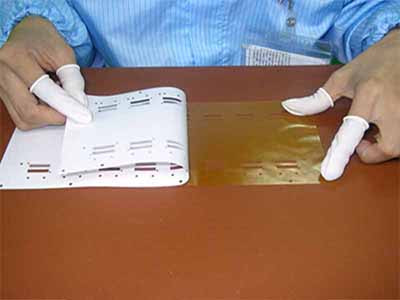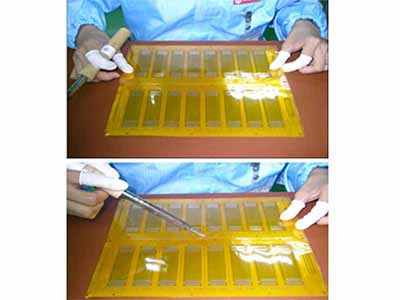If you have any experience with flex circuits, you are likely aware of the importance of coverlay material. Applying coverlay to a flexible circuit is essential to protect it from various types of damage, such as dust and moisture, while also providing valuable insulation. While the benefits of using coverlay on flexible circuits are well known, the process of actually applying the coverlay material requires careful attention to detail. To begin the process of applying coverlay, it is important to ensure that all necessary materials are on hand, including the coverlay material itself, a properly functioning soldering iron, and a clean, dust-free work surface. Additionally, it is important to take the time to clean any residue from the soldering iron prior to beginning the application process. With these materials in place, the process of applying coverlay can begin in earnest.
The process of pasting coverlay onto an FPC (Flexible Printed Circuit) requires a high level of precision and attention to detail.
- Before beginning the process, it is important to carefully inspect both the coverlay material and the film for any defects or imperfections, such as missing punching or drilling, or excessive burrs on the coverlay. Any dust or debris on the surface of the coverlay should be removed using a specialized packaging cleaner.
- Once the coverlay material has been inspected and prepared, it is time to clean the worktable and ensure that all necessary tools and materials are in their proper places. Before beginning the actual pasting process, it is essential to inspect the flex circuits to be pasted for any signs of oxidation, litter, or dust, as these can all impact the effectiveness of the pasting process.
- The process of pasting the coverlay should strictly adhere to the requirements of the process and the MI (Manufacturing Instructions) data. This involves aligning the coverlay with the “C” marking line, pad or counterpoint hole, and following the process parameters closely.
- When it comes time to peel off the coverlay, it should be placed on an optical desk with the release film facing up and the coverlay facing down. The coverlay should be held securely and the release film should be peeled off slowly and carefully to avoid any damage or imperfections in the final product.
peeling the coverlay off
- Fixing the coverlay on FPCwith soldering iron after the coverlay is aligned with the “C” marking line of the flex circuit board and ensure it is correct, so that the coverlay can not deviate or peel off. However, please remember the soldering iron can not burn the products.
pasting coverlay on FPC
- Single-side lamination: after pasted the coverlay on FPC, it should be gone through the machine with temperature between 160°C-165°C. Next, until the board got cold, the release film should be peel off and carry out the single-side lamination and self-checking.
Notices:
1. It is necessary to wear rubber gloves to prevent the flexible printed circuit board from oxidization or dirty.
- It must be kept clean during pasting coverlay on FPCto prevent there are dirty residues on flex circuits.
- It is required to check whether the coverlay is broken, wrinkled, scratched, etc..
- Do not wear accessories to avoid scratching the board.
- It is necessary to confirm that the coverlay leave a little bit space for plating if the flex circuitsare tin or gold plating.
- The hand could not beyond the handle to avoid burning when holding the soldering iron.
Best Technology is the premier expert in the manufacture of electronic components, brings a unique combination of technology and quality that offers a competitive supply of flex circuits and rigid-flex circuits and other flexible circuit products. With high qualified engineers, we are able to help you find a FPC with high quality. To find out more, contact Best Technology at 0755-29091601 or check the website: Contact Us










 2023-03-24
2023-03-24
 BEST
BEST



.png)
.png)
.png)
.png)

.png)

